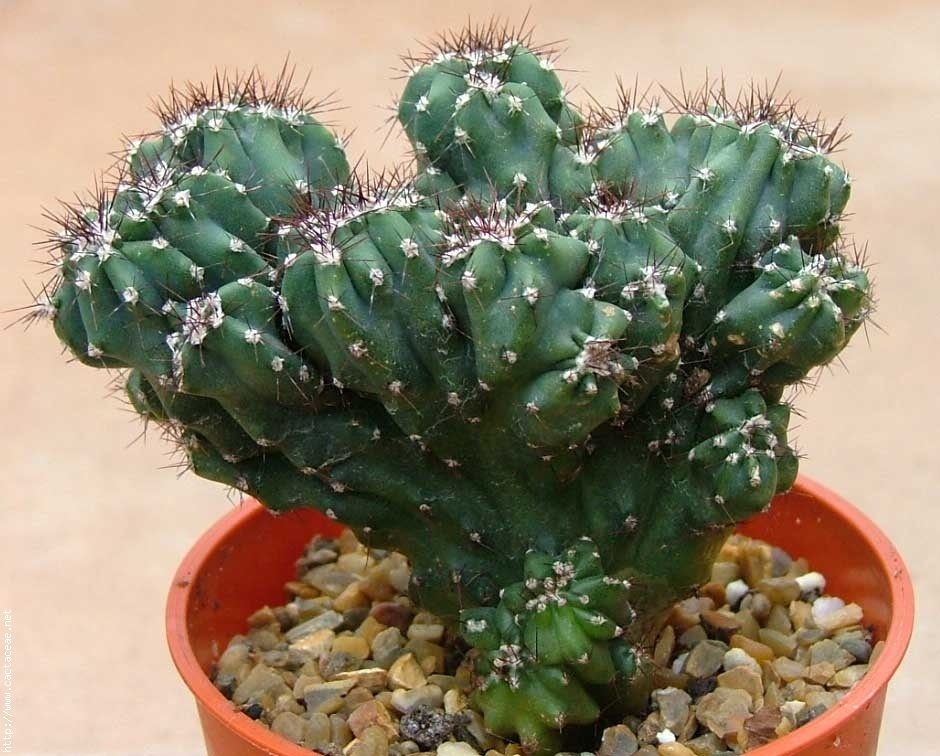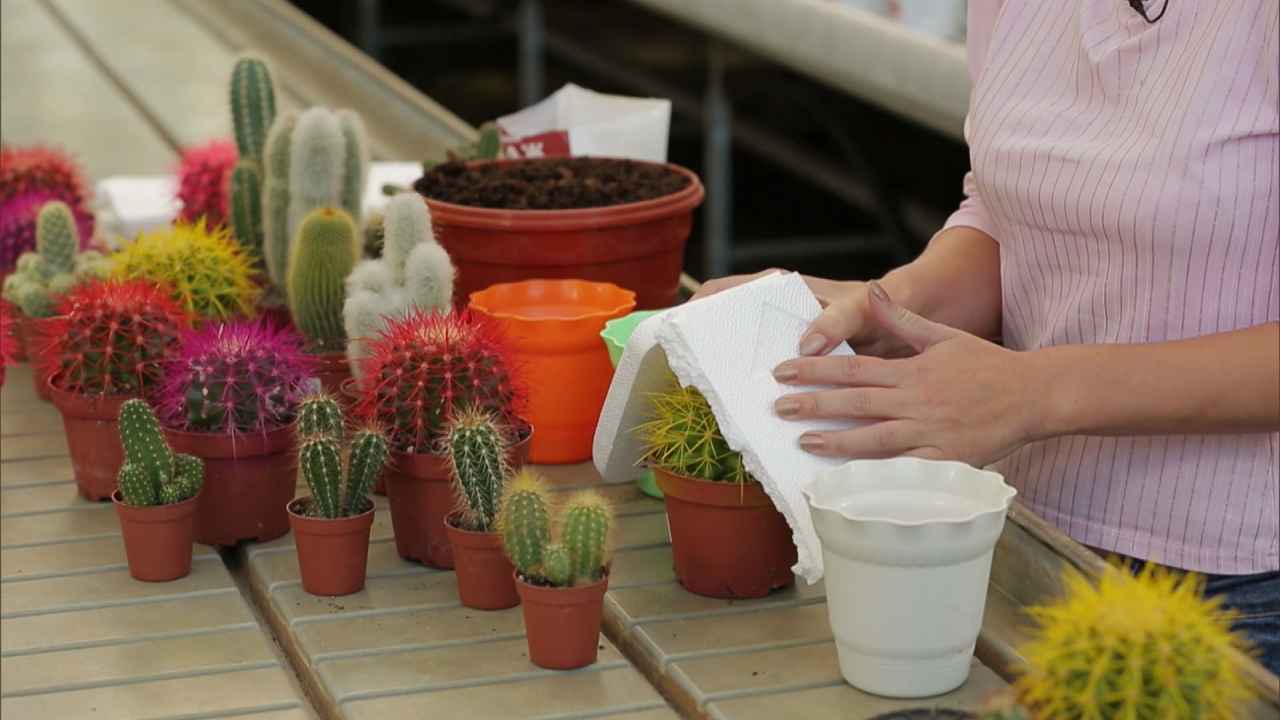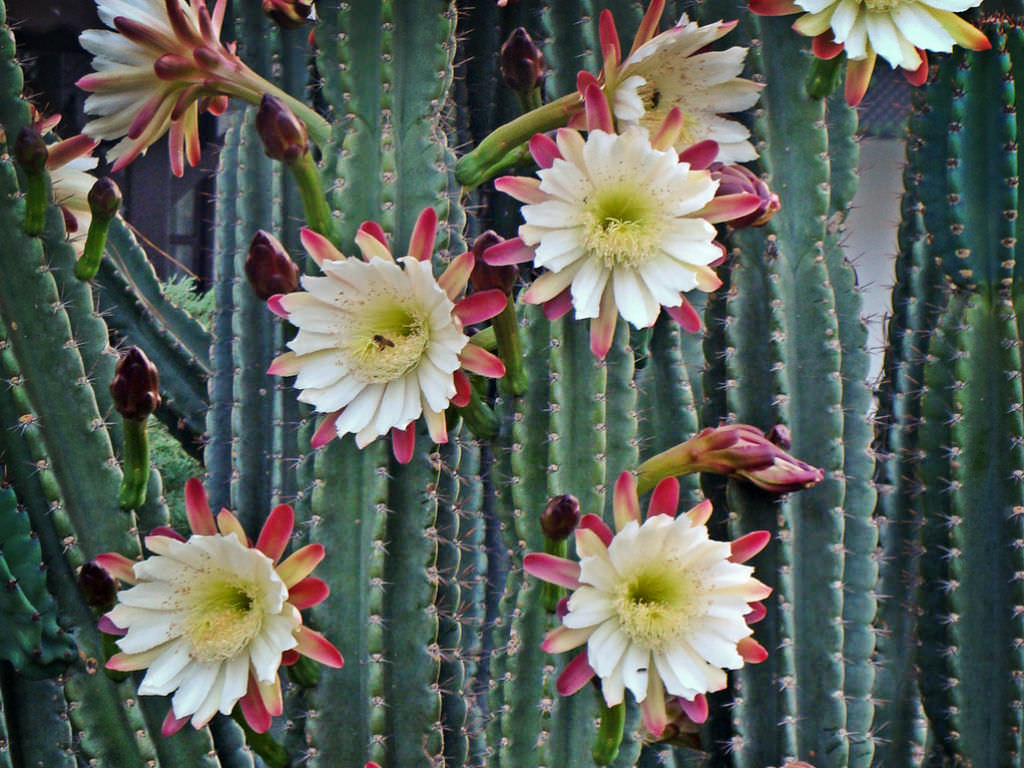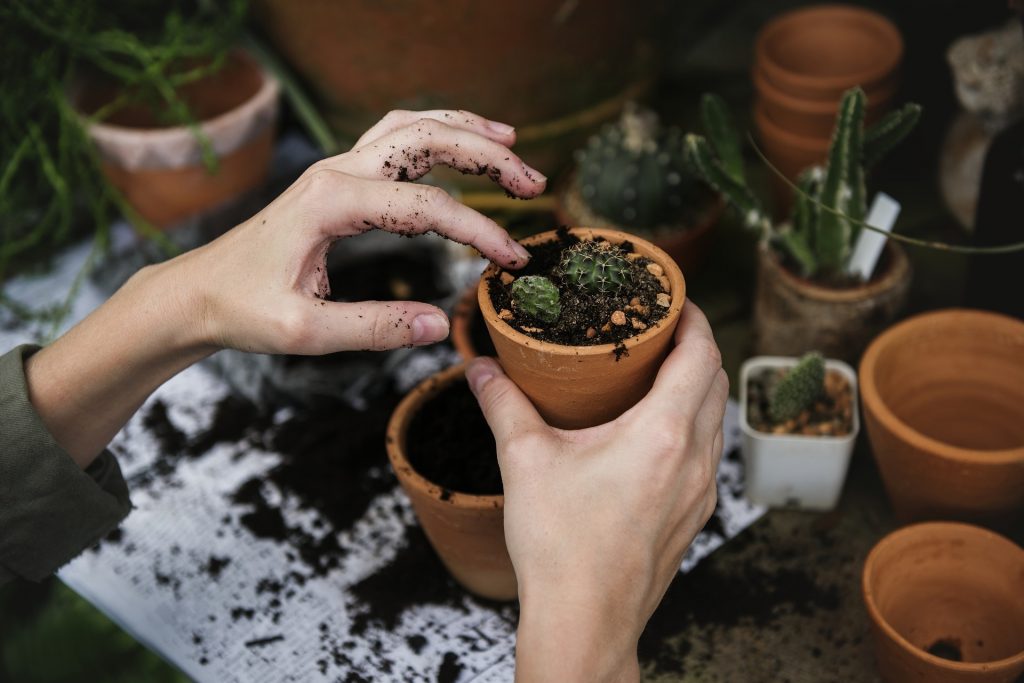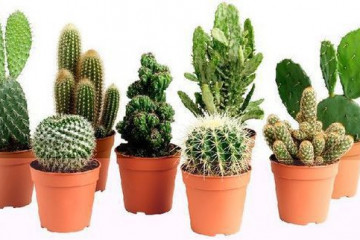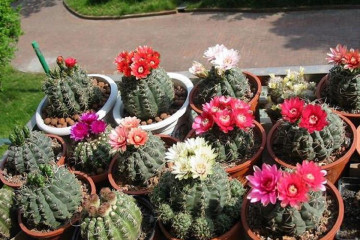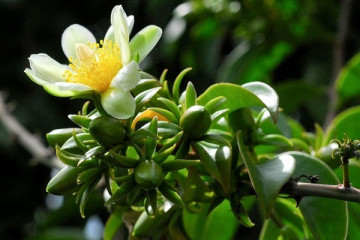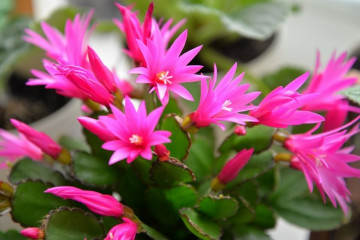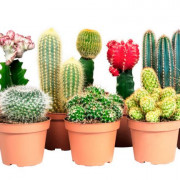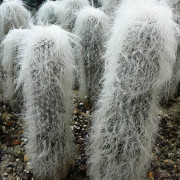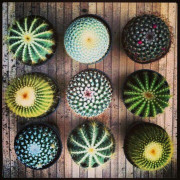Cereus Peruvian - home care
Content:
Cereus is a massive and unusual plant (some consider it even ugly). But in skillful hands and with proper care, this cactus blooms with beautiful yellow inflorescences and even produces edible small berries. The features of growing this outlandish succulent are described below.
What does Peruvian Cereus look like?
Cereus is one of the brightest representatives of the Cactus family. The succulent plant is distinguished by its large size, good frost resistance and fruitful growth. The plant reaches a height of 20 m. Its root system is considered powerful and dense, it develops very quickly. Often the succulent is called the Monstrous Cereus.
Sharp thorns are located along the entire length of the flower. Their length varies within 3 cm.The central spines are presented in the form of a thorn, their length reaches 10 cm.
Common varieties
The main types of cereus include:
- nocturnal cereus;
- Cereus Manga;
- spiral cereus;
- cerus azure;
- giant cereus.
- cereus jaustrosis;
- Cereus Yamakaru.
Cereus Peruvian: home care
Cereus cactus is a plant with good immunity. The speed and productivity of growth of the Peruvian cereus depend on caring for it at home. In order to correctly maintain a flower, you need to familiarize yourself with the rules for its watering, transplantation and reproduction.
Temperature
The owner should be aware that cactus cereus can tolerate extreme temperature changes. It does well in extreme heat and moderate cold. In winter, a succulent plant can develop normally at temperatures between 8 and 12 degrees. In summer, the maximum indicators are kept at around 30 degrees.
For fruitful growth, the Cereus flower needs good air circulation, therefore, it must be periodically taken out to the balcony (for 2-3 days).
Lighting
Cereus Peru loves good lighting, preferably natural. Gardeners are advised to display the plant in the lightest part of the house.
It is permissible to leave a cactus in direct sunlight during the summer. But here it is important not to overdo it, so that this does not lead to excessive dryness of the soil. Periodically, you will need to bring it into the house and protect it from exposure to ultraviolet rays.
Watering
Cereus cactus loves moderate watering. Excess and lack of moisture can adversely affect the growth and flowering of the plant.
Active watering must be carried out in the summer, when there is intense heat.
- In the fall, the plant is watered 2 times less often.
- In winter, watering is completely stopped.
You need to give the root system a little rest so that it does not start to rot. Gardeners advise to water the cereus with cool and hard water. The earth should always be moderately moist.
Humidity
The Peruvian cactus tolerates an arid atmosphere and thrives in it. But an increase in the percentage of humidity in the room will never harm him.
Therefore, it is periodically necessary to spray the plant with liquid from a spray bottle or turn on automatic air humidifiers.
Priming
The plant grows well in acidic or neutral soil. Humus soil is not suitable for the full growth of a cactus.
If gardeners use ready-made mixtures for planting crops, it is better to add a little sand or grated brick to the solution.
Top dressing
During the growth and growing season, the crop needs intensive and regular feeding. For these purposes, it is recommended to use potash and organic fertilizers.
Specialty stores sell special liquid fertilizers for cactus species; during the growing season of the plant, you can use them.
When the flowering is over, you need to feed the cactus once, and then leave it alone until spring. No fertilization is required during wintering.
Features of care during the rest period
The cactus plant blooms completely in mid to late September. At this time, experienced gardeners advise not to rearrange the succulent pot and not overload it with frequent watering.
Top dressing until the next cold weather can be completely excluded, but watering will need to be carried out at least once a month. This will contribute to the formation of new shoots.
The optimum temperature in winter for plant development is from 15 to 18 degrees Celsius. However, when the temperature rises to 25 degrees, the cereus will also feel good. You only need to periodically humidify the air in the room.
When and how it blooms
In the first year of growth, the shoots of the cereus have a bluish tint. The more time passes, the more they thicken and darken.
On the stem of the plant are areoles with thorns (5-6 pcs. In each). In April and May, the cactus begins to bloom. In place of the areoles, cream and yellow inflorescences appear. Their length can reach 16 cm. The leaves of the flowers are covered with barely noticeable scales, they have tubular petals.
As the flowers develop, they acquire a bright red hue. Blooming of buds is observed mainly at night. Further, fruits appear on the branches of the cactus. These are small round berries of a yellow or orange hue.
How Peruvian Cereus reproduces
Cactus culture propagates in two ways: by seed and cuttings.
Germinating seeds
Reproduction must begin in mid-spring (late April or early May). The step-by-step process is as follows:
- A small container must be filled with sand, mixed with a small amount of earth.
- Plant the presoaked seed in prepared soil.
- Water the soil and leave the pot in a cool and well-ventilated area until spring.
- When the first shoots appear, the container with seeds will need to be moved to a more illuminated part of the house, while the temperature should be kept at around 20 degrees Celsius.
When thorns appear, even loose ones, it will be possible to make a dive. Further, the young succulent is looked after as an adult plant.
Rooting cuttings
Cuttings are carried out at the beginning of summer. Better to navigate in mid-June. The procedure looks like this:
- Several young shoots are cut with a sharp disinfected knife.
- Prepared cuttings are cut into several parts.
- They are sent to a warm room for thorough drying.
- The pot is filled with loose soil, cuttings are placed in it, the plant is watered abundantly.
- Now it needs to be sent to a well-ventilated place to compact the root system.
Transfer
The number of transplants depends on the growth rate of the cactus breed. Usually the pot is changed once a year or two. The procedure is carried out according to the following scheme:
- Choose a larger pot, it must have sufficient depth.
- Place loose earth mixed with humus in a container.
- Plant a plant, water it abundantly and place it in a well-consecrated part of the house.
After 3-4 days, the Cereus cactus can be fertilized with mineral dressings. Re-watering is done when the soil in the pot dries well. Excessive humidity can damage the root system of the plant culture.
Diseases and pests
Cereus Peruvian is considered a fairly resistant plant. But if the proper conditions of care are not followed, it can become infected with various diseases or the appearance of pests on it:
- Shield. These are insects that have a convex body. They appear in the springtime. The scabbard sticks to the shoots of the flower and sucks out its juices. If insects are not removed in a timely manner, the cactus may die.
- Mealybug. The parasite appears on the shoots of the plant and leaves a white coating on them. Over time, it leads to the destruction of the integrity of the stems and leaves, this is fraught with the death of the cereus.
- Spider mite. The insect appears on the trunk of the succulent. The tick leaves its web and red dots on it, which lead to the slow death of the culture.
With reduced immunity, the plant culture can get sick with fungal and bacterial infections. The presence of pathology can be determined by a change in the color range of the aboveground part, the appearance of brown spots on the trunk, the development of rot on individual shoots. In such cases, it is necessary to carry out preventive spraying and transplant the culture into a new pot with clean soil.
Signs and superstitions
Since ancient times, cacti have been considered energy helpers for people. Many esotericists believed that they have a very strong and powerful energy.
People believe that a cactus placed or planted at the doorstep will be able to protect the house and its inhabitants from troubles and burglars. It should be borne in mind that cacti love a kind and warm atmosphere in the family. Therefore, if quarrels and conflicts occur regularly at home, the beneficial effect from the flower may not be seen.
Peruvian Cereus is a cactus plant that is easy to care for and has good immunity. The flower requires regular watering and feeding only during the active growing season, which greatly facilitates the growing process. Despite the unpretentiousness of the culture, one should not forget about the elementary rules of care in order to prevent the development of diseases.
